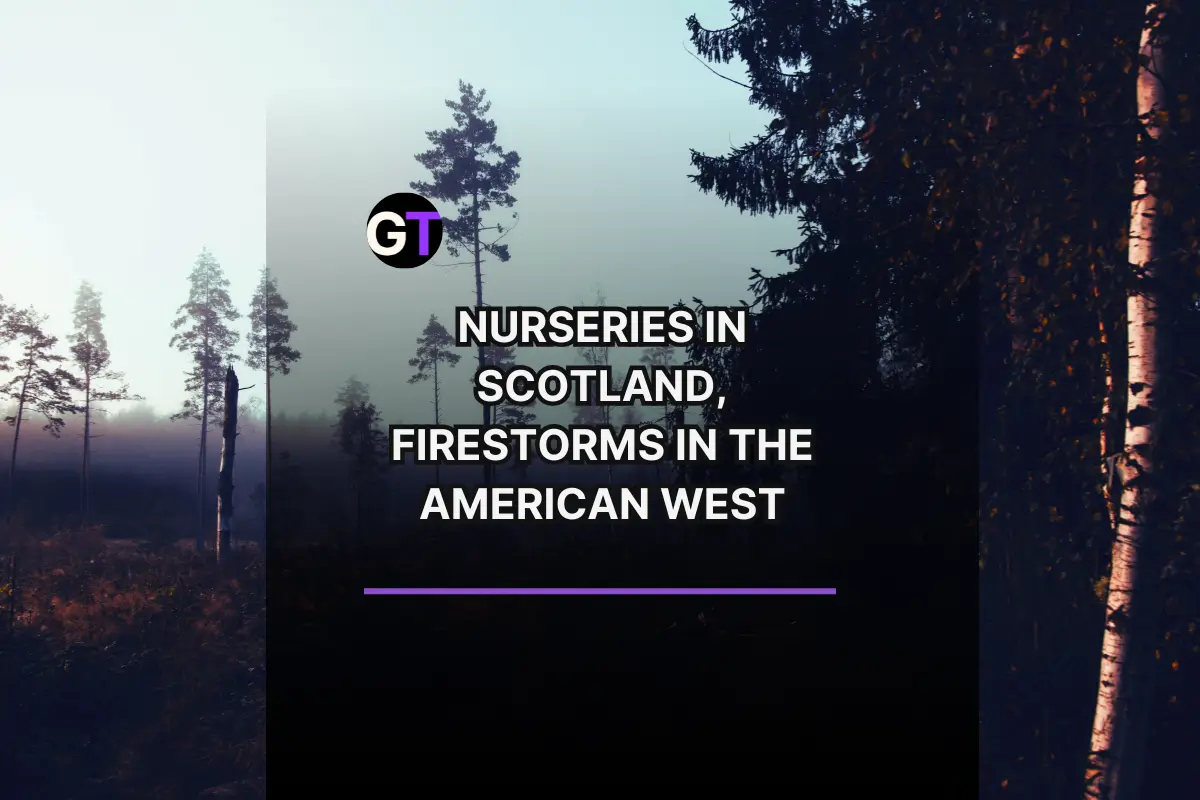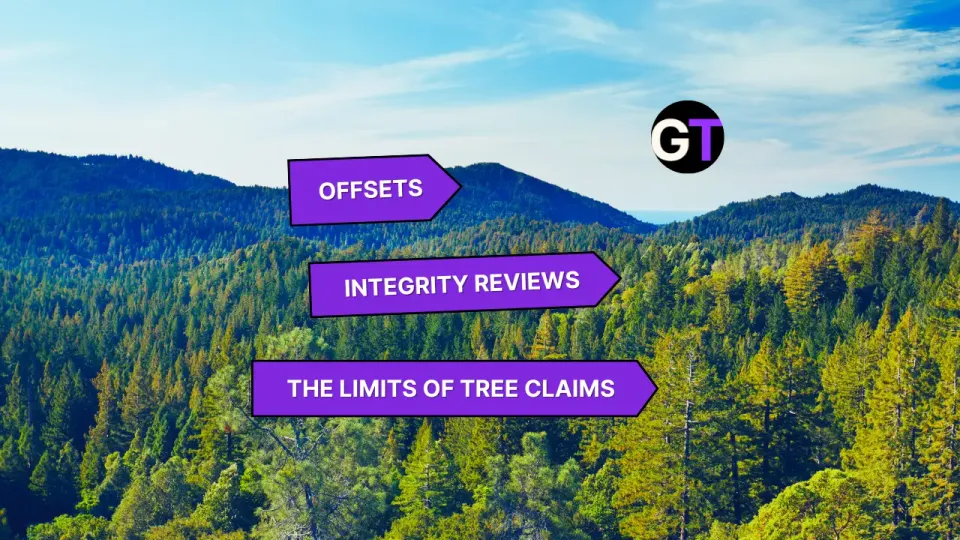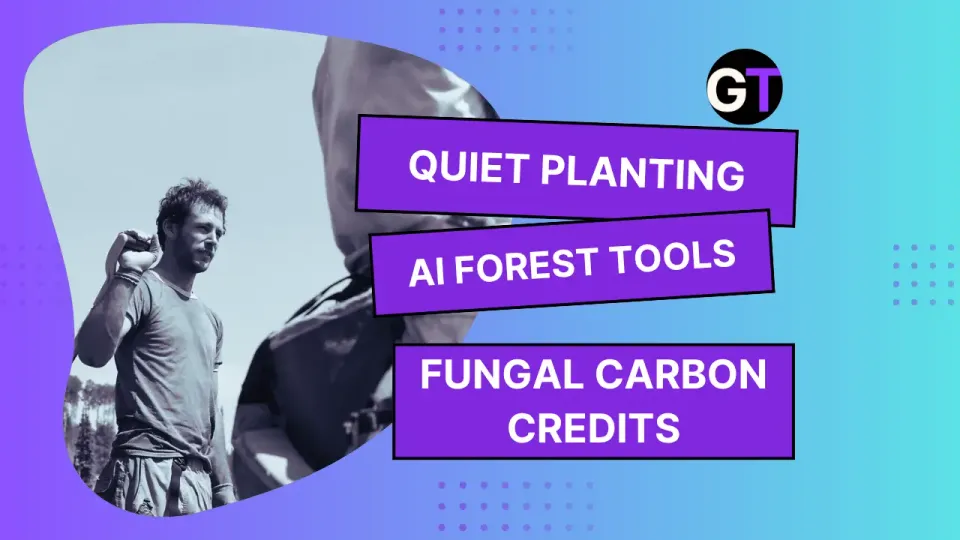Nurseries in Scotland Firestorms in the American West
With Scotland scaling up biosecure seedling production and US forests facing collapse without major fire reform, the planting gap grows sharper.

Newton Nursery Scales Up Scotland’s Forest Future
Scotland just planted a major investment in its woodland future: the £26m Newton Tree Nursery. Opened by First Minister John Swinney, the 12,000 m² glasshouse can grow up to 25 million trees a year — from Scots pine and sitka spruce to alder and birch. Backed by Scottish Government and Forestry and Land Scotland funding, the revamped nursery will supply the nation’s public forests, bolstering rural economies, biodiversity, flood control, and carbon storage. With 12 million seedlings already sprouting since March, the facility sets a new standard for bio-secure, high-volume forest production.
💬 Can Scotland’s new forest nursery help close the gap between ambitious woodland targets and the realities of planting at scale?
👉👉 Read the full article via The Dirt News
Western US Wildfires Are on Track to Get Hotter, Bigger, and Deadlier
From 1985 to 2022, annual area burned in western US forests jumped 10-fold, and area burned severely spiked 15-fold — trends scientists warn will only accelerate. By mid-century, climate-driven fire seasons could push those numbers 3–4 times higher, making record-breaking years like 2020 and 2021 the new normal. The danger isn’t just more fire, but more severe fire: fast-moving crown blazes that wipe out forests, erode ecosystems, and overwhelm already strained fire crews and recovery systems. The research underscores that without massive investment in thinning, prescribed burning, and Indigenous fire stewardship, forests risk widespread collapse — and with them, the carbon, water, and biodiversity they sustain.
💬 Can reintroducing low-severity fire at scale flip the script, keeping western forests resilient in an era of climate-fueled megafires?
👉👉 Read more via Global Change Biology
Efficiency vs. Equity: The Wildfire Dilemma in Climate Adaptation
When it comes to climate hazards, governments face a tough tradeoff: should investments prioritize efficiency (preventing the greatest harm overall) or equity (protecting the most vulnerable, even if fewer people are affected)? A new study shows that for heat stress and water shortages, efficiency and equity largely overlap — meaning interventions can tackle both at once. But for wildfire risk, the overlap is minimal. High-hazard areas often differ from high-vulnerability ones, leaving policymakers with a thorny choice between protecting dense populations or remote, highly vulnerable communities. Add in the challenge of managing federal vs. private lands across different regions, and the path forward is far from straightforward. The authors argue that future strategies will need not only better hazard reduction, but also a sharper lens on social vulnerability, climate migration, and how equity considerations shape resilience.
💬 Can wildfire adaptation strategies truly balance efficiency and equity — or will tradeoffs always leave some communities exposed?
👉👉 Read more via Natural Hazards
Amazonian and Andean Trees Lag Behind Climate Warming
A new 40-year study of 66,000 trees across Peru and Bolivia shows that tropical forests aren’t keeping pace with climate change. While warmer-adapted species are slowly becoming more abundant (a process called thermophilization), the shift is far slower than the rate of regional warming. The effect is most pronounced at mid-elevations near the cloud base, driven more by mortality and slowed growth of highland species than by lowland trees moving upslope. In the Amazon lowlands, change is even slower, raising red flags for the future of the world’s most biodiverse forests. If trees can’t track rising temperatures quickly enough, their composition, resilience, and ecosystem services could be fundamentally altered.
💬 If tropical giants can’t outrun the heat, what does that mean for the stability of Earth’s most diverse forests?
👉👉 Read the full study in PNAS
Kenya’s Forest Monitoring System: Data-Driven Reforestation with Climate ROI in Sight
Kenya is pairing its ambitious tree-planting goal — 15 billion trees by 2032 — with a robust, tech-enabled National Forest Monitoring System (NFMS) to track progress, emissions reductions, and forest health. Backed by global partners like FAO and JICA, the NFMS supports REDD+ efforts, biodiversity tracking, and data-driven forest restoration. With transparent reporting, participatory stakeholder input, and links to carbon finance, Kenya’s approach blends policy, science, and community to scale sustainable forest management.
💬 Can Kenya’s high-tech reforestation model scale fast enough to meet its 2032 goals — and set a new data standard for emerging carbon markets?
👉👉 Read more via FAO Open Knowledge
Global Forest Finance: From Tribal Maple Syrup to Brazil’s Billion-Dollar Bet
This week’s forest finance roundup spans six continents and one major theme: reforestation is now economic policy. In the U.S., the Forest Service is backing six Midwest and Northeast projects with $2M in grants aimed at wildfire risk, water quality, and Indigenous agroforestry. Taiwan is revamping its reforestation incentives to blend ecology with forest-based livelihoods. Brazil launched a $3B phase of its EcoInvest program, linking reforestation to capital markets across 1.4M hectares. Meanwhile, Spain's Motor Verde earned the Iberian Peninsula its first Verra certification, Rwanda sharpened its ESG-friendly carbon credit playbook, and Pacific Island nations secured new KIWA funding for reforestation and resilience. Forestry, it seems, is having a very global moment.
💬 As forest restoration goes global, will public and private capital align — or will big ideas stall without scalable, locally grounded models?
👉👉 Read our weekly roundup on Ground Truth
Old Forests, New Fires, and a Scientific Standoff
Western North America’s forests are at the center of a fierce debate. On one side, many ecologists argue that active management — thinning, prescribed burns, and fuel treatments — is essential to prevent megafires that sterilize soils, wipe out seed sources, and erase future forests. On the other, critics warn that such interventions risk repeating past mistakes, degrading old-growth ecosystems, and releasing more carbon. They argue that climate-driven megafires can’t be “managed away,” and that resources should focus on protecting communities rather than reshaping wilderness. Beneath the clash lies a deeper divide: should humans intervene more, or step back and let forests — and fire — find their own balance in a hotter, drier future?
💬 In an era of climate-fueled megafires, should active management be scaled up as a lifeline for forests — or scaled back to let ecosystems adapt on their own terms?
👉👉 Read the full article in Mongabay
Tracking the Health of Earth’s Ecosystems with New Global Productivity Data
A new global dataset from Land & Carbon Lab’s Global Pasture Watch delivers the most detailed maps yet of gross primary productivity (GPP) — the rate at which plants capture carbon through photosynthesis — at 30-meter resolution, spanning over two decades. This breakthrough allows researchers, policymakers, and land managers to monitor ecosystem health with unprecedented precision, from grasslands to forests, revealing how climate stress, land use, and conservation efforts shape vegetation productivity. Applications range from tracking degradation and restoration, to guiding pasture management and carbon assessments. The data is open-access, customizable, and designed to make ecosystem health both visible and actionable.
💬 Can high-resolution GPP data finally bridge the gap between global monitoring and local decision-making for conservation, restoration, and climate action?
👉👉 Read the full article in Land & Carbon Lab
New Forestry Regulation Eases Rules for Mining, Lifts Reforestation Requirement
Turkey’s new forestry regulation tilts the balance toward mining, giving companies freer rein in forested areas. Gone is the requirement to rehabilitate and return land before extending operations — now, a simple letter from MAPEG confirming reserves remain is enough to keep digging. Lawyers warn this shift makes mining licenses “superior” to environmental permits, eroding oversight and sidelining reforestation altogether. On paper, some limits remain for large open-pit projects, but in practice, the change extends the lifespan of mines at the expense of forests, ecosystems, and public trust.
💬 If reforestation is no longer required, are we essentially turning forests into one-way extraction zones with no path back?
👉👉 Read the full article in Bianet
Mexico Battles Wildfire Damage with Drone-Based Reforestation
In Michoacán, one of Mexico’s most fire-scarred states, drones are being deployed to scatter pre-germinated seeds across burned landscapes that crews can’t easily reach. Each drone carries up to 20 kilos of seed, spreading them over charred hectares in hopes of reviving forests faster and cheaper than manual planting. Officials expect a 30% germination rate — a modest figure, but in places where 97,000 hectares burned last year alone, even partial regrowth could mean the difference between barren slopes and recovering ecosystems.
💬 How does a 30% germination rate from drones stack up against the success rates of planting seedlings by hand — and what might this mean for scaling reforestation in hard-to-reach terrain?
👉👉 Read the full story in The Tico Times
Global Covariation of Forest Age Transitions with the Net Carbon Balance
A new global analysis finds that while young forests can act as short-term carbon sinks due to rapid regrowth, they can’t match the long-term carbon storage of old-growth stands. From 2010–2020, vast areas of the Amazon, Congo, Southeast Asia, and Siberia lost older forests to disturbances like fire and logging, driving a net global loss of 0.14 PgC per year in aboveground carbon stocks. Meanwhile, regions like China, Europe, and North America showed net ageing. The bottom line: protecting centuries-old forests is irreplaceable for carbon stability, even as young stands help offset losses in the near term.
💬 Can forest management strategies strike the balance between leveraging the growth of young stands and safeguarding the irreplaceable carbon vaults of old forests?
👉👉 Read the full study in Nature Ecology & Evolution

Edited by Chris Harris

This work is licensed under a
Creative Commons Attribution 4.0 International License.





